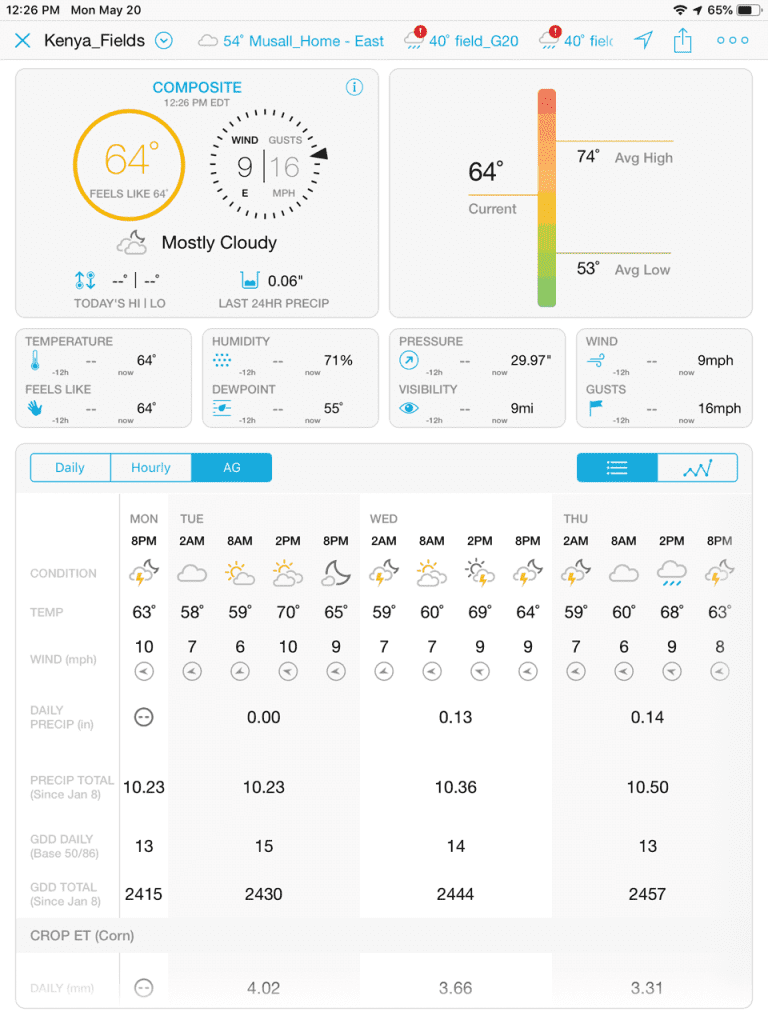IBM has released a set of analytics tools that combine weather data and farm data in its Watson machine-learning engine to give farmers insights about planning, plowing, planting, spraying and harvesting.
IBM’s new smart farming solution, announced as an expansion of its Watson Decision Platform for Agriculture, leans on weather data and weather prediction models from The Weather Company, which it acquired in 2016.
It pools this with farm data, and runs the combined data sets through its Watson artifical intelligence (AI) engine and Watson IoT cloud platform to produce crop models to help farmers improve the accuracy of their yield forecasts, and increase farm production and profitability.

New crop models include corn, wheat, soy, cotton, sorghum, barley, sugar cane, and potato. More are to be introduced, it said. They will be available in the US, Canada, Mexico, and Brazil, with markets in Europe, Africa and Australia slated for release.
The platform tracks the environmental and biological elements that go into good and bad yields, and develops models that consider weather conditions, irrigation management, pest and disease risk, and ‘cohort analysis’ for comparing similar subsets of fields.
It can be set also to share crop management patterns and insights to partner enterprises, such as food companies, grain processors, and produce distributors.
IBM quoted 2016 data from BI Intelligence in its release, which says the average farm generates 500,000 data points per day, growing to four million per dat by 2036. Applying AI and analysis to aggregated farm data is the only way to be able to make use of it, it said.

Kristen Lauria, general manager of Watson Media and Weather Solutions at IBM, commented: “Farmers don’t just farm food, they also cultivate data – from drones flying over fields to smart irrigation systems, and IoT sensors affixed to combines, seeders, sprayers and other equipment.
“Most of the time, this data is left on the vine – never analysed or used to derive insights. Watson Decision Platform for Agriculture aims to change that by offering tools and solutions to help growers make more informed decisions about their crops.”
IBM has released an artificial intelligence (AI) tool, alongside, called Weather Signals, which conflates farm and weather data to show how weather fluctuations affect business.
Roric Paulman, owner/operator of Paulman Farms in Nebraska, is quoted in the release, stating: “The wild card is always weather. IBM overlays weather details with my own data and historical information to help me apply, verify, and make decisions. For example, our farm is in a highly restricted water basin, so the ability to better anticipate rain not only saves me money but also helps me save precious natural resources.”
IBM said: “The result isn’t just more productive farmers. Watson Decision Platform for Agriculture could help a livestock company eliminate a certain mold or fungus from feed supply grains or help identify the best crop irrigation practices for farmers to use in drought-stricken areas like California.
“It could help deliver the perfect French fry for a fast food chain that needs longer – not fatter – potatoes from its network of growers. Or it could help a beer distributor produce a more affordable premium beer by growing higher quality barley that meets the standard required to become malting barley.”

Analyst house ABI Research said this week that two million farms and 36 million cattle will be connected by 2024.
For field and tree crops, the primary driver for connectivity is to irrigate sufficiently and efficienctly at the same time, align with government regulation on water usage, it said; for livestock, it is about collecting data relating to the health of animals, including birthing activities, as well as knowledge of their whereabouts.
In general, ABI said higher yields, higher quality products, and greater farming insights are the chief considerations for all agricultural sectors.
An editorial report from Enterprise IoT Insights, called Connecting Agriculture – the promise of smart farming and the challenge of connectivity’, looks at development of IoT technologies in the farming and agricultural sectors. The report, free to download, can be found here. It is the second in the new Making Industry Smarter report series from Enterprise IoT Insights. For a full schedule of editorial reports, see back page of the Connecting Agriculture report.

